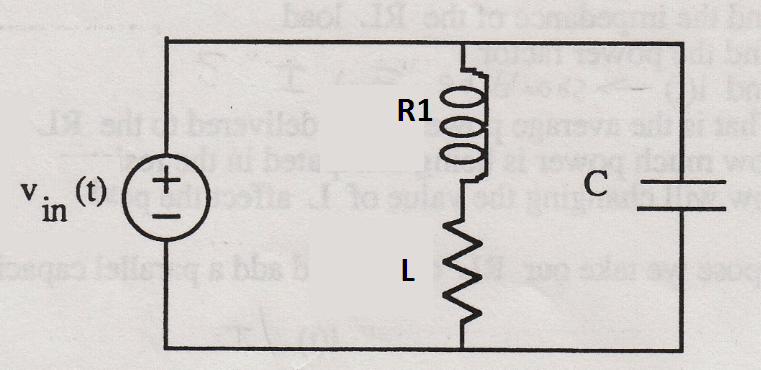Discuss/explain the changes in apparent power(S) and why there were no changes in average power(P) for both circuits. Explain it all in terms of the “power triangle”. No value of C was given.
Discuss/explain the changes in apparent power(S) and why there were no changes in average power(P) for both circuits. Explain it all in terms of the “power triangle”. No value of C was given.
Introductory Circuit Analysis (13th Edition)
13th Edition
ISBN:9780133923605
Author:Robert L. Boylestad
Publisher:Robert L. Boylestad
Chapter1: Introduction
Section: Chapter Questions
Problem 1P: Visit your local library (at school or home) and describe the extent to which it provides literature...
Related questions
Question
Discuss/explain the changes in apparent power(S) and why there were no changes in average power(P) for both circuits. Explain it all in terms of the “power triangle”.
No value of C was given.

Transcribed Image Text:The image is a schematic representation of an electrical circuit.
**Description of Circuit Components:**
1. **Voltage Source:**
- The voltage input is denoted by \( v_{\text{in}}(t) = 5 \cos (5 \times 10^3 t) \).
- This indicates an AC voltage source with an amplitude of 5 volts and an angular frequency of \( 5000 \text{ rad/s} \).
2. **Inductor:**
- Next to the voltage source is an inductor with an inductance of \( 0.1 \text{ H} \) (henries).
3. **Resistor:**
- Connected in series with the inductor is a resistor with a resistance of \( 865 \, \Omega \).
4. **Capacitor:**
- In parallel to the series combination of the inductor and the resistor is a capacitor represented by the symbol \( C \).
**Explanation:**
This circuit is a classic example of a series RLC circuit with a parallel capacitor, which is driven by an AC voltage source. The circuit can demonstrate concepts such as resonance, impedance, and the phase relationship between voltage and current in AC circuits. The frequency of the source can affect the behavior of the circuit, particularly in terms of resonance where the inductive and capacitive reactances can cancel each other out.
Expert Solution
Step 1
The given circuit is shown below,

Step by step
Solved in 7 steps with 4 images

Recommended textbooks for you

Introductory Circuit Analysis (13th Edition)
Electrical Engineering
ISBN:
9780133923605
Author:
Robert L. Boylestad
Publisher:
PEARSON

Delmar's Standard Textbook Of Electricity
Electrical Engineering
ISBN:
9781337900348
Author:
Stephen L. Herman
Publisher:
Cengage Learning

Programmable Logic Controllers
Electrical Engineering
ISBN:
9780073373843
Author:
Frank D. Petruzella
Publisher:
McGraw-Hill Education

Introductory Circuit Analysis (13th Edition)
Electrical Engineering
ISBN:
9780133923605
Author:
Robert L. Boylestad
Publisher:
PEARSON

Delmar's Standard Textbook Of Electricity
Electrical Engineering
ISBN:
9781337900348
Author:
Stephen L. Herman
Publisher:
Cengage Learning

Programmable Logic Controllers
Electrical Engineering
ISBN:
9780073373843
Author:
Frank D. Petruzella
Publisher:
McGraw-Hill Education

Fundamentals of Electric Circuits
Electrical Engineering
ISBN:
9780078028229
Author:
Charles K Alexander, Matthew Sadiku
Publisher:
McGraw-Hill Education

Electric Circuits. (11th Edition)
Electrical Engineering
ISBN:
9780134746968
Author:
James W. Nilsson, Susan Riedel
Publisher:
PEARSON

Engineering Electromagnetics
Electrical Engineering
ISBN:
9780078028151
Author:
Hayt, William H. (william Hart), Jr, BUCK, John A.
Publisher:
Mcgraw-hill Education,